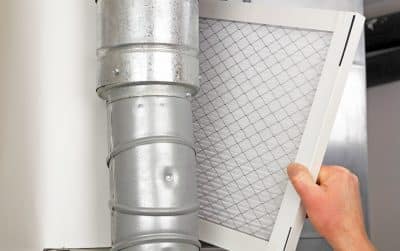Healthy Home, Healthy Family: What’s Your Home’s Wellness Score?
The word “health” might make you think about a balanced diet, nutrition regimen, and exercise. But health encompasses so much more. To achieve holistic health, it’s important to think beyond the common view of health and include your environmental wellness, too.
Environmental wellness is determined by the strength of the relationship between an individual and their environment. Do you support your environment (keeping it clean and preserving it, whether it’s at work, home, or nature) and vice versa? The environment you have the most control over is your home. And it can have a big impact on your family health.
If you aren’t focusing on your home environment, it could be impacting your wellness negatively. From clutter to air quality, there are many things to consider when it comes to your home environment and family health.
The following questions will help highlight how well your environment supports the health, well-being, and safety of you and your family. When you’re done, we will total up your score and see how you did. Afterward, you’ll also find tips on how you can create a safer, hazard-free wellness haven in your home.
Tips for Improving Your Score
Home contaminants, like radon, can be devastating for your family’s health. Radon is a radioactive gas that is undetectable to the eye and nose. It can cause lung cancer. If you are new to your home or are unsure of its history, contact your local health and/or environmental quality department to inquire about testing.
Air quality is not something to neglect once you step foot in your home and close the door behind you. Despite closed doors and sealed windows, outside air can creep in. Not to mention there may be some indoor sources of particles or pollutants that create air quality issues—like pets and various cleaners. Read over the following for some tips on how to clean up the air in your home for easier breathing.
- HEPA (High Efficiency Particulate Air) filters are readily available in small, compact air purifiers. And there’s a bonus: they act as white-noise machines if you’re a light sleeper. Consider picking one of these up, especially if you’re a pet owner.
- Change your home air filter at least every three months. If you’re a pet owner or have a family member with sensitive allergies, consider changing them every two months. Increase how frequently you change them with each additional dog or cat.
- Speaking of pets, dander and fur or hair can shed easily and build up quickly, even if these allergens don’t register visually. The same is true for pollen in the spring or general dust and debris year-round. Routine sweeping and vacuuming can make a world of difference for your family member who might have a sensitivity.
- House plants aren’t just good for decor. New research out of the State University of New York-Oswego has found that five common house plants are proficient at filtering volatile organic compounds (VOCs) out of the air. VOCs are irritants that can cause dizziness, headaches, and allergy flare-ups. A common VOC found in homes is acetone from household cleaners and nail polish remover. To clean up your home’s air, pick up one of the following at your neighborhood gardening store:
- Jade plant (C. argentea)
- Spider plant (C. comosum)
- Bromeliad (G. lingulata)
- Caribbean tree cactus (C. falcata)
- Dracaena (D. fragrans)
Technology, while helpful, has become so pervasive in our culture. Undoubtedly, you probably have at least one personal, technological device in the major rooms of your homes. You might even have smart home devices throughout your living space. When used conservatively, these devices can keep you connected and simplify your communications. However, when used too much, your tech devices can start to negatively impact your wellness. Consider the following in regard to technology use:
- Blue light emissions from screens have been shown to disrupt the brain and delay the onset of restful sleep. Try turning off devices at least 30 minutes before bedtime so your eyes get a break and your brain can wind down naturally.
- If it’s too difficult to limit screen time before bed, consider employing an app that filters blue light on your devices. F.lux is one of many free options.
- Examine how technology is incorporated into the layout or design of your home. If possible, consider removing devices from rooms in which they might not be necessary. For example, keeping the bedroom technology-free restores its utility as a room for rest and relaxation. Remove bedroom TVs. If you prefer to keep your phone in the bedroom, leave it on the opposite side of the room.
Clutter is an unavoidable reality at times, but it does come with some cost. Too much clutter can pose physical safety risks, like tripping hazards. These hazards need special attention if you live with kids or older people. And then there’s the existential crisis of things and items you collect over a lifetime. Here are some ideas about minimizing the clutter to create safer, and perhaps happier, spaces at home:
- Clutter can pose physical safety risks if it moves into entries, walkways, and open space. Organizational bins or toy chests can keep rooms clearer and safer. Try adding console tables or benches in the entry that contain bins, baskets, or drawers. You can also build lockers in your mud room.
- Stuff. Can’t live with it; can’t live without… Or can you? Over the years, you’ve undoubtedly amassed a load of things. And as the volume grows, the space in which to put them shrinks. Ask yourself about your ties to the things in your life and whether or not they promote or hinder happiness. You may discover that your things steal your time. That’s because you must dedicate effort and energy to maintain and organize them on a daily basis. So why not rid yourself of some things to lighten the load, both physically and mentally? As writer Gretchen Rubin says, “Outer order contributes to inner calm.” Try rounding up items that have gone unused or unworn for the past month. Make a donation to a local shelter, nonprofit, or school. You’ll be decluttering your home and supporting your community.
Alarms take very little thought and maintenance, but they can provide peace of mind. Run through the following systems to ensure your home is ready to protect you.
- Sensitive smoke alarms can feel like more of a nuisance than a help. So, they can be easy to forget about. Regularly check if your alarm is in working order with fully charged batteries.
- Carbon monoxide is one of most common causes of death due to poisoning. For added safety, install a carbon monoxide detector to protect you and your family against this poisonous gas that you can’t see, smell, or taste.
- Consider installing a home security system. Whether it’s one camera or a whole suite of cameras and sensors, some measure of security can help deter burglars and package thieves. Most systems can be linked to your cell phone for easy monitoring, home access, and other surveillance options.
Pests are pests! From mice to termites, pests can be unnerving at the least. They could also damage your home’s structural integrity at the most extreme. Consider getting a full inspection if you’re unaware of your home’s current state. If you are, take preventative steps like proper sealing of holes. You can also set traps when necessary. Remember to clean up any food or spills, and look at smart food-storage solutions, like sealable glass containers.















